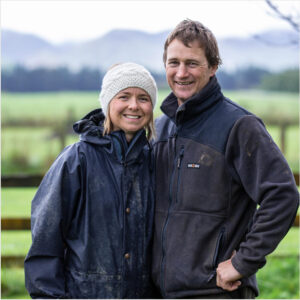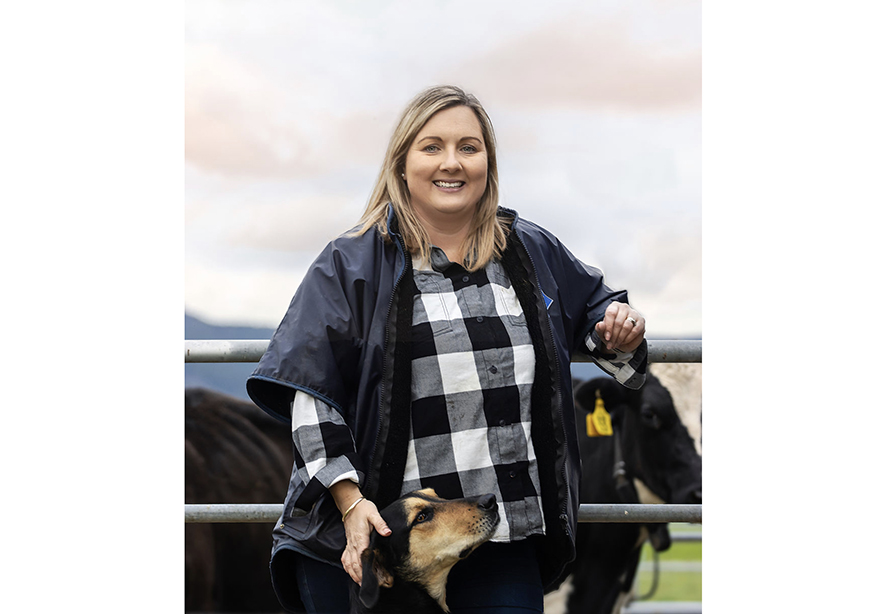Effective communication between staff is key to building a great team culture, and ensuring the right message gets across is even more important at busy times of the year, like calving and lambing.
We spoke to Deanne Parkes, of Deanne Parkes, Rural Development Leader, about what good communication looks like, and some practical tips for improving communication on-farm to ensure everyone is on the same page.
Deanne and her husband are dairy farmers themselves, and Deanne’s business has a focus on team culture and communication.
“I think communication is a skillset that’s so important, but not a lot of people are trained in it, it’s just expected that everyone will be able to communicate,” Deanne explains.
The key is being able to communicate your message in a way that’s clear and understood the first time, reducing room for error or things to go wrong that ultimately cost more time – time that’s at a premium when the pressure is on.
Good communication has a flow on effect to our relationships with our staff, boss or colleagues, and can impact on health and wellbeing. Creating an environment where people feel heard and have the confidence to ask a question if they don’t understand makes for a more harmonious, and happy, workplace.
Clear communication
When communication is clear and concise and everyone hears the message that’s intended it’s great. The opposite can result in things going wrong, affecting tangible outcomes on-farm and people’s feelings.
“It’s important for our relationships and health and wellbeing that we make sure people are receiving the right message. If not, that’s when mistakes happen, and can have negative results, from a dead animal to a few extra hours added to the day. It can also make people feel heavy and start second guessing themselves.”
At this time of year when calving is in full swing, time is the biggest pressure, and that’s when communication can be rushed.
“Not taking a little extra time to communicate well can end up costing you more time. For example, today my husband didn’t communicate to me the cows needed to stay in the cow shed to have collars put on, so I let them go and lost time having to bring them back in. It caused disharmony because we were both pissed off as we did not have spare time to be chasing cows!”
What does good communication look like?
Good communication is when the message a person is trying to convey has landed correctly and been understood clearly by the person receiving the message. It means taking the time to convey that message too. If a person doesn’t understand the message, it’s having the space and confidence to ask for clarification or to ask a question.
Tips for good communication
- Make time in your day to communicate. Set aside time or have a meeting when time permits. If could be as simple as 5-10 minutes when you’re having your morning coffee together, or as you’re walking the cows in.
- Create time for team members to ask questions – it has to work both up and down the chain, not just from the top down. Create an environment and team culture where team members feel they can ask questions. If people don’t understand or aren’t clear it’s important to have space where they feel comfortable to raise the question.
- Remember everyone is at a different stage in their farming career. What is second nature to experienced farmers may not be for everyone on the team. A task that may seem simple to you might not be for someone else. “When the pressure is on it’s easy to forget that. Be thoughtful of others and their skill level and ability.”
- Tone and manner are important. Think about the way you communicate, everyone communicates differently, so take the time to think about each individual person.
- Look for non-verbal cues. The better you know your team, the easier it is to pick up on these.
- Take the time to stop, look at the person and deliver your message. “Farmers are shocking for talking and walking away at the same time. Take an extra 10 seconds to stop, look the person in the eye and ensure they’ve heard you correctly. If they’re looking blank you may need to go further and ask what steps they will take to complete the task.”
- What tools can you use for effective communication? Whiteboards or using your phone to take notes and record information can be helpful. Communication is not just verbal. Using group messenger or WhatsApp can be a great way to keep communication going between team members too.
Communication often boils down to interpretation, Deanne says. Focus on creating an environment where people are not scared to ask questions and feel comfortable seeking clarity without resistance. A team culture where learning is encouraged and questions are viewed as curiosity rather than negativity can determine the mood of the team and affect wellbeing.
Deanne points out that good communication shouldn’t just be reserved for on-farm, it includes home life too. “Communication is just as important around kids, meal planning, and activities, like sports. We use a massive planner in our house.”
A farmer’s perspective
Undertaking training on communication has helped Norsewood dairy farmer Russell Heald build a team culture to aspire to, creating a happy workplace and, in turn, reducing stress levels for the entire team.

“I’ve done some coaching and training around this, identifying where our stress points are, for myself, the staff and the animals. It’s about thinking outside the square a bit and asking what could we do to reduce this stressor, or what could we change?”
They have a daily huddle when staff arrive at 8am (they are on once-a-day milking) to decide what’s happening and who is responsible for what. The huddle provides an opportunity to touch base and see where everyone is at. For Russell, it’s a chance to identify what’s going on and what changes he could make.
“I often ask questions, and it’s about asking really good questions and empowering them to take ownership. I’m not the boss, so to speak, I’m part of the team. Everyone is equal here and if everyone feels like they are a valuable part of the team they’ll put more into it.”
The start time itself is good for his all-female staff, who are able to sort their young children before heading to work. A generous roster, allowing for work life balance, is another bonus.
“For them, their workplace is like their stress relief, it’s almost like we have created their happy place.”
Once-a-day milking works well for the Healds too, who have experienced the long hours that often come with dairying, and they want to prevent the burnout that is all too common in the industry, for themselves and for their staff.
Finding the right people
“It’s finding the right people for the team too, not just someone who wants a job, it’s getting someone who loves being here. Both the women we have just love coming to work.”
Russell and his wife Charlotte put a lot of thought into the kind of team they wanted to create, and that has paid off, reducing stress on everyone.
“I always said, for me to get out of the shed, I wanted people who will love my cows as much as me, and I’ve got that in two people.”
Letting go of expectations and, even if something doesn’t quite work out, choosing to believe that people are always doing their best, is a mindset they have consciously adopted.
“People won’t always remember what you said to them, but they will always remember how you made them feel, and that’s huge. Often, I will get staff to repeat back what I have said. Both our current staff members are fairly new and still getting used to how I think and operate. I find that is valuable, that way everyone is on the same page.”
Asking open-ended questions, rather than closed yes or no questions is also valuable, empowering staff to take ownership and be accountable.
Setting expectations
They also set expectations of behaviour by implementing OAR-BED. OAR stands for taking ownership, being accountable and taking responsibility for what you see or do (above the line behaviour). BED (or below the line behaviour) stands for blame, making excuses or denying. “We talk about this is terms of how we show up,” Russell explains.
An added bonus at the Heald’s farm is daily baking done by eldest daughter, Isabelle, for the ‘cow shed café’. Fresh baking turns up at the cow shed every morning at 10am, which goes down a treat. “It’s just doing that little bit extra sometimes. We have fruit available too, but the staff love the baking and that’s something new we’ve introduced this season.”
Russell sums it up well, “if you can learn to communicate properly you will create a great team culture, and if you can create a team culture where people show up happy, then everything is going to work for you”.
“How you show up in the cow shed is how the cows will show up. Energy is everything.”
For more information
To discuss how you can enable your team culture, or communication for you and your team, contact Deanne at deanne@deanneparkes.com or call 0272304949.
Read more blogs from Sharpes Farm Feeds.


